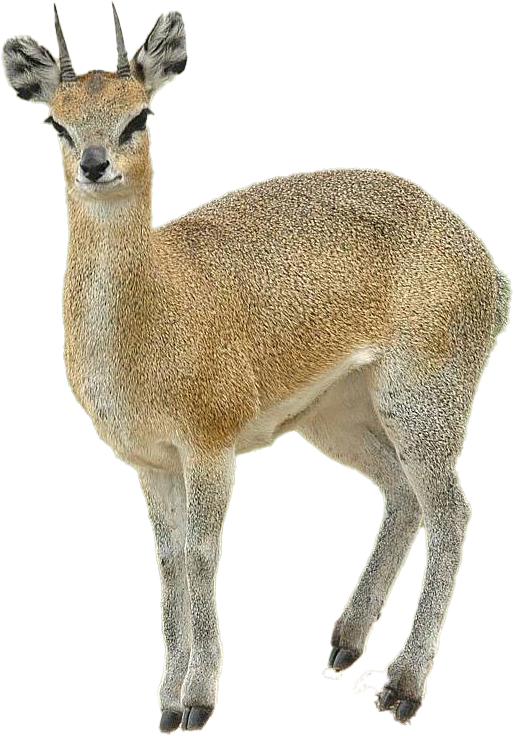
Description:
The klipspringer is a small, sturdy antelope; it reaches 43–60 centimetres
at the shoulder and weighs from 8 to 18 kilograms. The coat of the klipspringer, yellowish gray to reddish brown, acts as an efficient camouflage in its rocky habitat. Unlike most other antelopes, the klipspringer has a thick and coarse coat with hollow, brittle hairs. The horns, short and spiky, typically measure 7.5–9 cm.
Habitat:
The klipspringer inhabits places characterised by rocky terrain and sparse vegetation. Its range extends from northeastern Sudan, Eritrea, Somaliland and Ethiopia in the east to South Africa in the south, and along coastal Angola and Namibia.
Diet:
Primarily a browser, the klipspringer prefers young plants, fruits and flowers. Grasses, eaten mainly in the wet season, form a minor portion of the diet. Some plants, such as Vellozia, may be preferred seasonally. Klipspringer depend mainly on succulent plants, and not on water bodies, to meet their water requirement. They can stand on their hindlegs to reach tall branches up to 1.2 m above the ground; some individuals in Namibia were observed climbing Acacia trees up to a height of 5.4 m.
Behavior:
Typically nocturnal, the klipspringer rests during the middle of the day and late at night. A gregarious animal, the klipspringer is monogamous to a much greater extent than other antelopes; individuals of opposite sexes exhibit long-term to lifelong pair bonding. The mates tend to stay as close as within 5 m of each other at most times. Males form territories, 7.5–49 hectares, in which they stay with their partners and offspring.